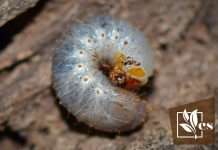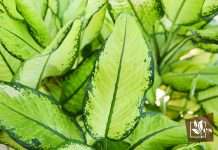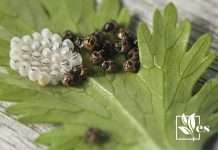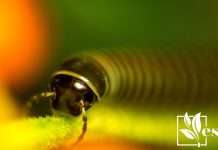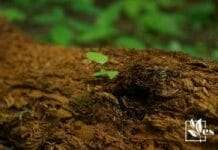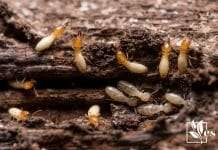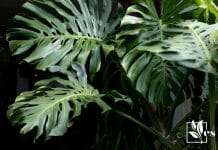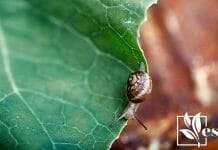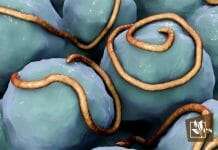Peach leaf curl is a fungal disease that affects peach and nectarine trees, identifiable by the red puckered lesions on leaves which eventually distort and cause premature leaf drop. Timing is critical in managing this disease; the most effective moment for treatment is in the dormant season, before the signs of the disease manifest on the new leaves. This usually involves applying a fungicide right after leaf drop in autumn or before budding starts in spring, as many of the search results confirm. Once the new leaves have emerged and displayed symptoms, it’s typically too late for treatments to cure the affected leaves.

However, timing can vary based on your climate. In areas with mild winters, you may need to spray earlier than in regions where cold persists. Consistently monitoring the weather and the tree’s dormancy stage is imperative for effective application. Additionally, if the winter is wet and conditions are favorable for the disease, a second round of fungicide in late winter or early spring might be necessary, especially if the autumn treatment was missed.
It’s too late to spray for peach leaf curl once the leaves have begun to show symptoms of the disease; effective control measures must be taken during the dormant season, between leaf drop and bud break.
JUMP TO TOPIC
Identifying Peach Leaf Curl
In my experience, detecting peach leaf curl early is essential for the health of your peach and nectarine trees. Knowing what to look for can make a big difference in managing this disease effectively.
Symptoms of Leaf Curl
Peach leaf curl is a fungal disease characterized by visible, unusual deformations on peach and nectarine leaves. The most obvious signs I’ve noticed are:
- Early Symptoms: Leaves may appear thickened with a reddish discoloration.
- Progressed Symptoms: Leaves become distorted or puckered and may have red spots; later, they can turn yellow or even drop prematurely.
Effects on Peach and Nectarine Trees
The effects of this disease are not limited to the foliage. The overall health of the tree can be compromised:
- Fruit Production: Affected trees might not produce fruit properly. If symptoms appear early, fruit may also show signs of distortion similar to the leaves.
- Tree Vigor: Repeat infections can reduce the tree’s vitality and make it more susceptible to other stresses.
If reddish, puckered, or distorted leaves are spotted, it’s crucial to act swiftly to manage peach leaf curl and protect the tree’s health.
Timing of Peach Leaf Curl Treatments
Peach leaf curl is a fungal disease that must be managed at specific times in the plant’s life cycle. Understanding when the fungus is active and vulnerable to treatment is key to controlling the disease. Here’s how it works:
Fungal Pathogen Taphrina Deformans
Taphrina deformans is the fungus responsible for peach leaf curl. This pathogen thrives in cool and wet conditions, typically infecting peach and nectarine trees in the early spring. As the buds begin to swell, spores are ready to invade emerging leaves, blossoms, or shoots. The infection causes leaves to distort, thicken, and often display a reddish coloration. Once the leaves unfurl, it is too late for fungicides to be effective.
Overwintering and Spread
The fungus overwinters on the tree’s surfaces, including bark and bud scales, biding its time through winter until conditions are right. Wet weather and rain facilitate the release of spores, which spread the infection. To prevent this spread, I apply fungicides during the dormant season, specifically after leaf drop in fall and before bud swell in spring. Missing this critical window means the tree will likely suffer from the disease until the next dormant season. Therefore, the timing of fungicide application is crucial to success.
To effectively control peach leaf curl, fungicide sprays must be applied after leaf drop in fall and before bud swell in spring. Any later and the treatment will be ineffective.
Prevention and Control Strategies
Upon discovering peach leaf curl in my orchard, I learned the importance of timely and proactive measures. Below, I discuss how cultural practices and chemical treatments play crucial roles in preventing and controlling this disease.
Cultural Practices
🌱 Pruning: Regular pruning helps reduce peach leaf curl. I make sure to prune my trees late in the fall or during winter to remove any diseased wood and to promote good air circulation. Improved air flow can reduce humidity around the leaves, which is a key condition for fungal growth.
Watering: Proper watering also assists in disease management. I’m careful to avoid wetting the foliage, as moisture promotes the spread of the fungus. Instead, I water at the base of the tree, preferably using a drip irrigation system, which keeps the leaves dry.
Chemical Treatments
🌳 Fungicide Application: For effective control, I apply fungicides containing copper during the dormant season. Timing is crucial; I spray after leaf drop but before bud swell. I always make sure that the trees are thoroughly coated, as the fungicide must cover all surfaces to be effective.
Choosing the Right Fungicide: Copper fungicides are my first choice due to their efficacy and organic status. When I select a fungicide, I look for active ingredients like copper ammonium complex or copper sulfate, ensuring to follow the specific label instructions regarding mixing and application rates.
Resistant Varieties: In addition to these treatments, I consider planting resistant varieties of peaches. Varieties like ‘Frost,’ ‘Indian Free,’ and ‘Q-1-8’ have shown resistance to peach leaf curl, which allows for fewer chemical interventions.
By employing these strategies, I can usually prevent the occurrence of peach leaf curl, ensuring my peach trees remain healthy and productive.
Effective Treatment Options
When it comes to managing peach leaf curl, timing and strategy are key. Let me guide you through the most effective means to prevent and control this disease with proper fungicide application and the selection of resistant cultivars.
Applying Fungicides
For the best outcomes, I use fungicides as a preventive measure before symptoms emerge. I generally apply copper-based fungicides or copper soaps, which serve as protective barriers to the trees. It is critical to thoroughly cover all branches and buds since once they bloom, it’s too late to treat. Another fungicide I often use is chlorothalonil, which provides excellent protection and should be applied in late autumn or early spring before bud swell. For maximum effectiveness, I make sure that the trees are drenched, allowing the solution to reach all potential infection sites.
- Apply a copper compound or chlorothalonil spray thoroughly in late fall or early spring.
- Ensure complete tree coverage.
Resistant Peach and Nectarine Cultivars
Choosing resistant varieties is a proactive approach to reduce the impact of peach leaf curl. Some cultivars that show resistance include ‘Frost’, ‘Indian Free’, ‘Muir’, and ‘Q-1-8’. While ‘Frost’ is quite resilient, it may require fungicide treatments during the initial years of growth to enhance its resistance. By planting these varieties, I minimize the risk of infection and can often bypass the need for frequent fungicide application.
| Resistant Varieties | Fungicide Treatment Need |
|---|---|
| Frost | First 2-3 years |
| Indian Free | Rarely needed |
| Muir | Rarely needed |
| Q-1-8 | Rarely needed |


